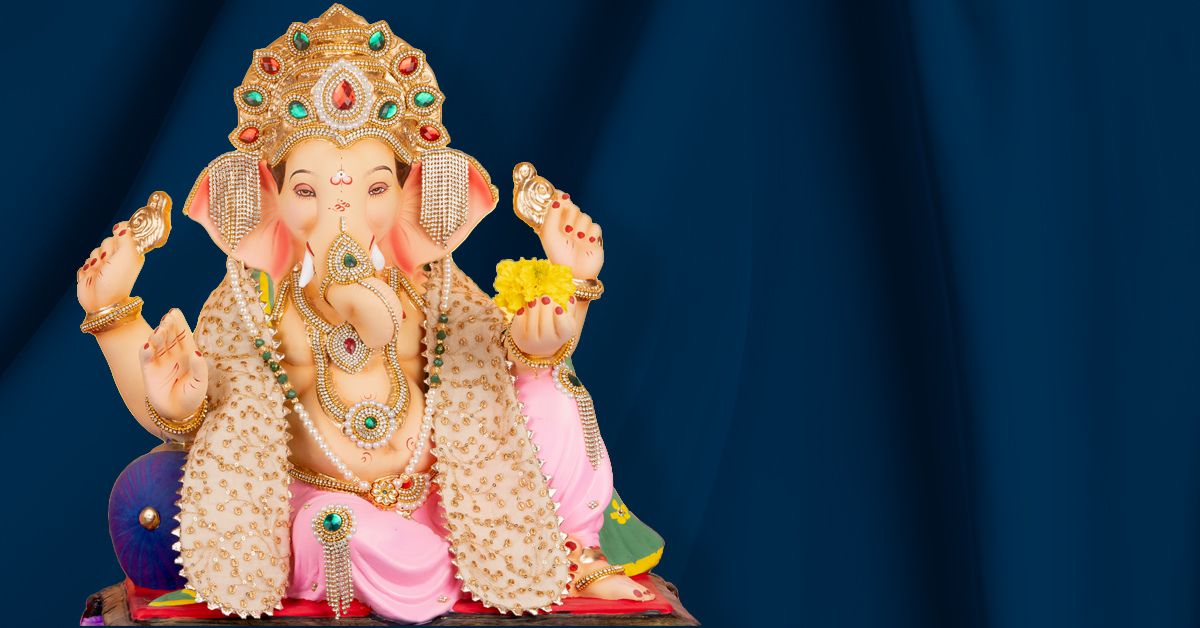Ganesh Chaturthi, is one of the most widely celebrated Hindu festivals in India and by the Indian diaspora around the world. It honors Lord Ganesha of wisdom, prosperity, and good fortune. The festival typically spans over ten days, with the highlight being the installation of beautifully crafted Ganpati idols in homes and public places. While there are many customs and rituals associated with Ganesh Chaturthi, one important aspect to consider is the significance of "khes" and what to take when visiting different people's homes for darshan (the act of seeing or paying respects).
The Significance of Khes:
"Khes" refers to a piece of cloth, often a silk or cotton drape, that is used to adorn the idol of Lord Ganesha during the festival. The practice of draping the idol in uparna/ Khes holds deep symbolic significance. Here's what khes represents:
- Purity and Respect: The khes symbolizes purity and respect for the deity. It is believed to purify the surroundings and create an atmosphere of sanctity during the festival.
- Offering of New Beginnings: Ganesha is revered as the Lord of new beginnings and remover of obstacles. The offering of a new piece of cloth (khes) signifies a fresh start and the removal of obstacles from one's life.
- Decoration: Beyond its symbolism, the khes adds to the visual grandeur of the idol. Elaborate and colorful khes are used to beautify the idol and create a festive atmosphere.
- Expression of Devotion: Preparing the idol with a khes is an act of devotion and reverence, signifying the devotee's love and respect for Lord Ganesha.
Etiquette for Visiting Homes During Ganesh Chaturthi:
During Ganesh Chaturthi, it is a common tradition for people to visit each other's homes to offer their respects to Ganpati Bappa. When visiting someone's home for darshan, it is customary to bring certain offerings or gifts as a mark of respect and gratitude. Here are some items you can take when visiting different people's homes during the festival:
- Prasad: One of the most common offerings is prasad, which can include sweets like modak (a favorite of Lord Ganesha), laddoos, or other homemade treats. It's a way to share the blessings of the festival.
- Flowers: Fresh flowers, especially hibiscus and marigolds, are commonly offered. You can bring a bouquet of flowers as a token of your respect.
- Coconut: A whole coconut is often offered to Ganpati Bappa. It symbolizes purity, selflessness, and the breaking of one's ego.
- Fruits: Fresh fruits like bananas, apples, or coconuts are considered auspicious offerings.
- Aarti Thali: If you are particularly close to the host family, you can bring an aarti thali (a plate with items for the ritualistic aarti) as a thoughtful gift.
- Gifts: Some people also choose to bring gifts for the host family, such as home decor items, incense, or even cash offerings (dakshina).
- Kumkum and Haldi: Offering kumkum (vermilion) and haldi (turmeric) is a traditional way of showing respect and blessing the host family.
Remember to dress modestly and respectfully when visiting homes for darshan, and always seek the blessings of the Bappa and the hosts. Ganesh Chaturthi is a time of joy, community, and spiritual reflection, and by observing these customs and traditions, you can fully immerse yourself in the celebration while paying homage to Lord Ganesha and strengthening your bonds with family and friends.




Leave a comment
All comments are moderated before being published.
This site is protected by hCaptcha and the hCaptcha Privacy Policy and Terms of Service apply.